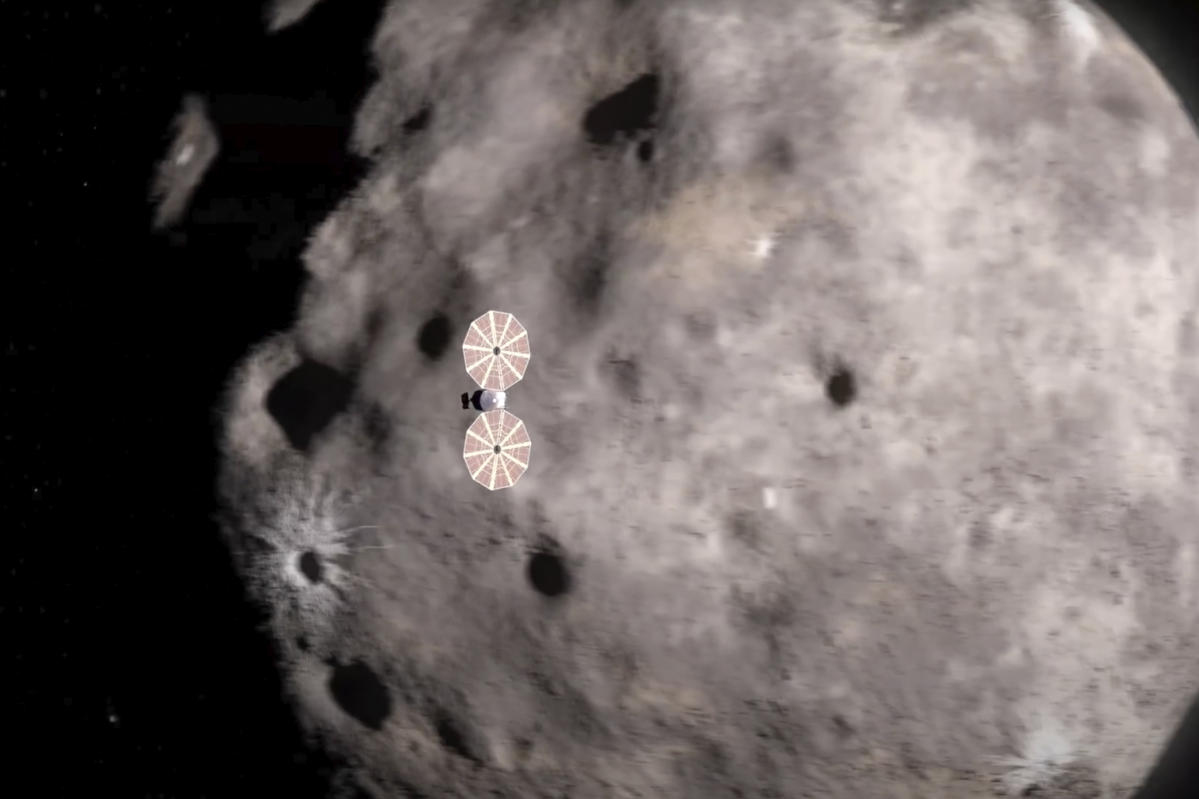CAPE CANAVERAL, Fla. (AP) — NASA’s Lucy spacecraft embarked on its journey to Jupiter and encountered the first of 10 asteroids on Wednesday.
The spacecraft swiftly passed by the pint-sized Dinkinesh, located 300 million miles (480 million kilometers) away in the main asteroid belt beyond Mars. The encounter was described as “a quick hello” by NASA, as the spacecraft zoomed by at a speed of 10,000 mph (16,000 kph).
Lucy came within 270 miles (435 kilometers) of Dinkinesh, conducting a dry run to test its instruments before reaching the larger and more intriguing asteroids up ahead. Dinkinesh is only half a mile (1 kilometer) in diameter, potentially making it the smallest rock in space on Lucy’s tour.
Lucy’s main objectives are the Trojans, groups of unexplored asteroids near Jupiter that are believed to be so-called time capsules from the early days of our solar system. The spacecraft will pass by eight Trojans that are estimated to be 10 to 100 times larger than Dinkinesh. The final two asteroids will be navigated in 2033.
NASA launched the Lucy mission, with a budget of nearly $1 billion, two years ago. The spacecraft is named after the 3.2 million-year-old skeletal remains of our human ancestor discovered in Ethiopia during the 1970s. Lucy’s next destination is an asteroid named after one of the fossil Lucy’s discoverers: Donald Johanson.
One of the solar wings on the spacecraft remains loose, though it is believed to be stable enough to endure the entire mission after multiple attempts to secure it failed.
Wednesday’s flyby marks the end of NASA’s Asteroid Autumn, during which the agency collected the first samples of asteroid rubble in September and launched a spacecraft to a rare, metal-rich asteroid called Psyche in October.
Unlike those missions, Lucy will not make any stops at asteroids or collect any samples.
The spacecraft will take at least a week to transmit all the pictures and data gathered during the flyby.
Until now, Dinkinesh was merely “an unresolved smudge in the best telescopes,” according to Hal Levison, the lead scientist at Southwest Research Institute.
___
The Associated Press Health and Science Department receives support from the Howard Hughes Medical Institute’s Science and Educational Media Group. The AP is solely responsible for all content.


